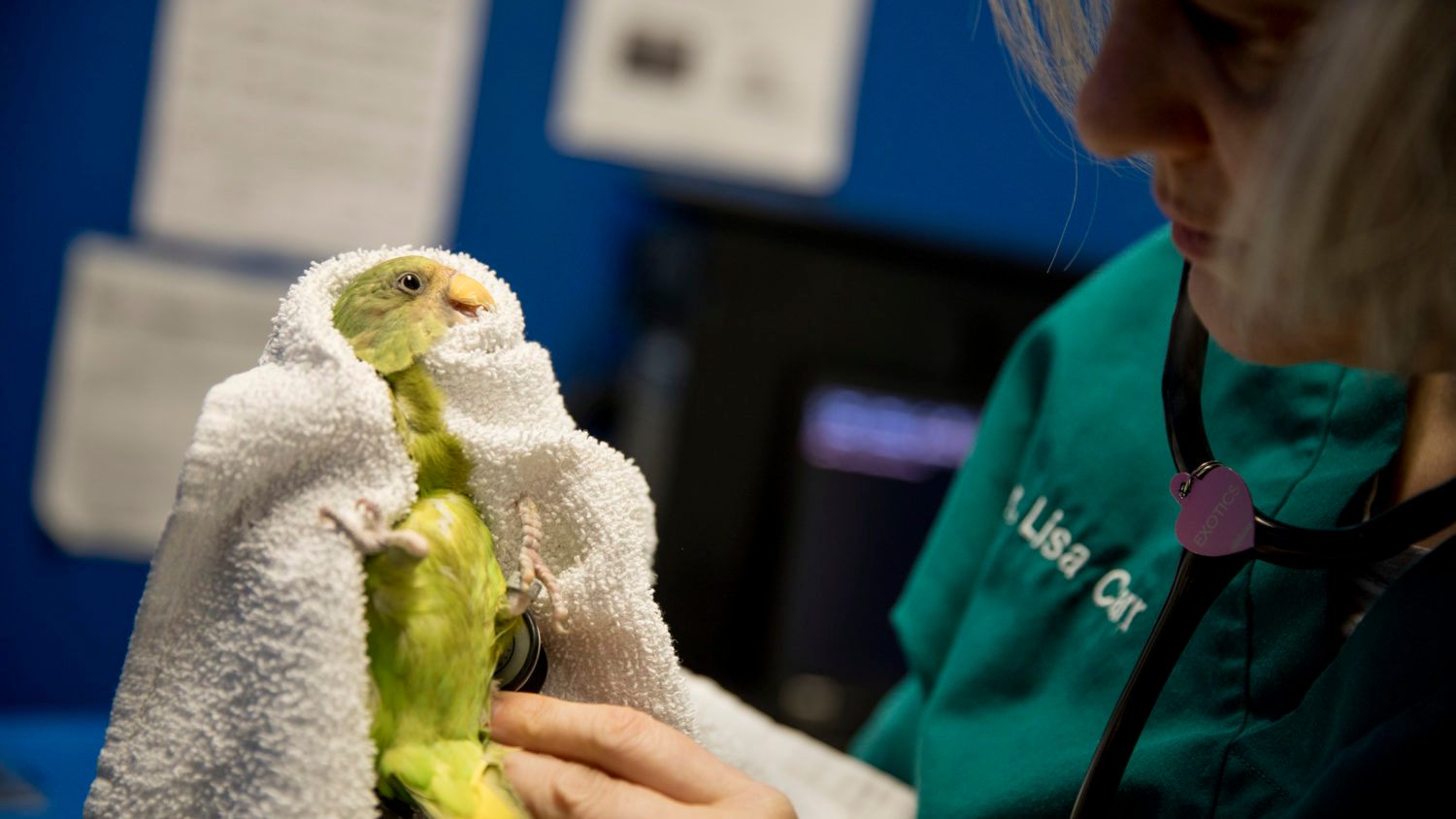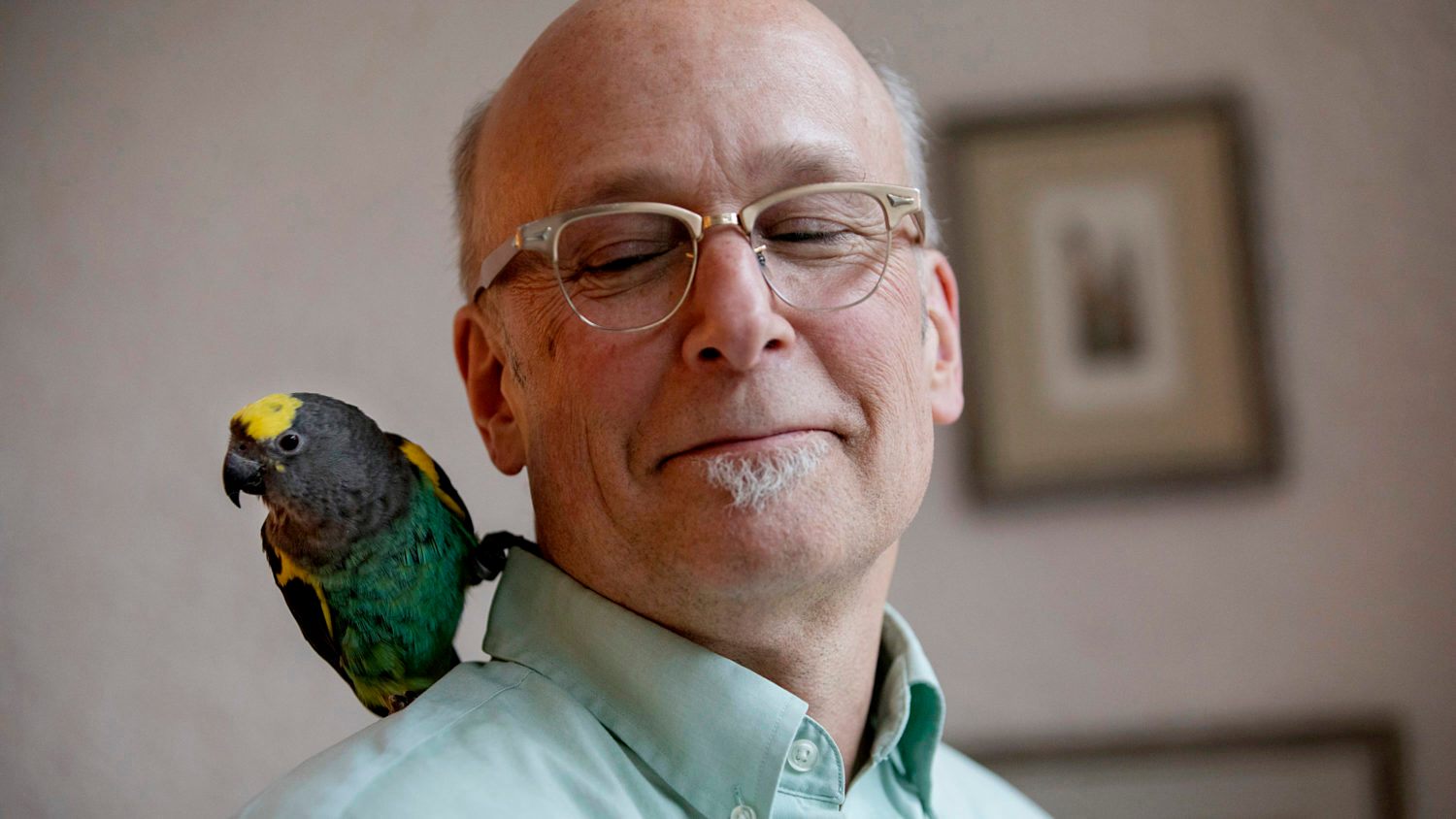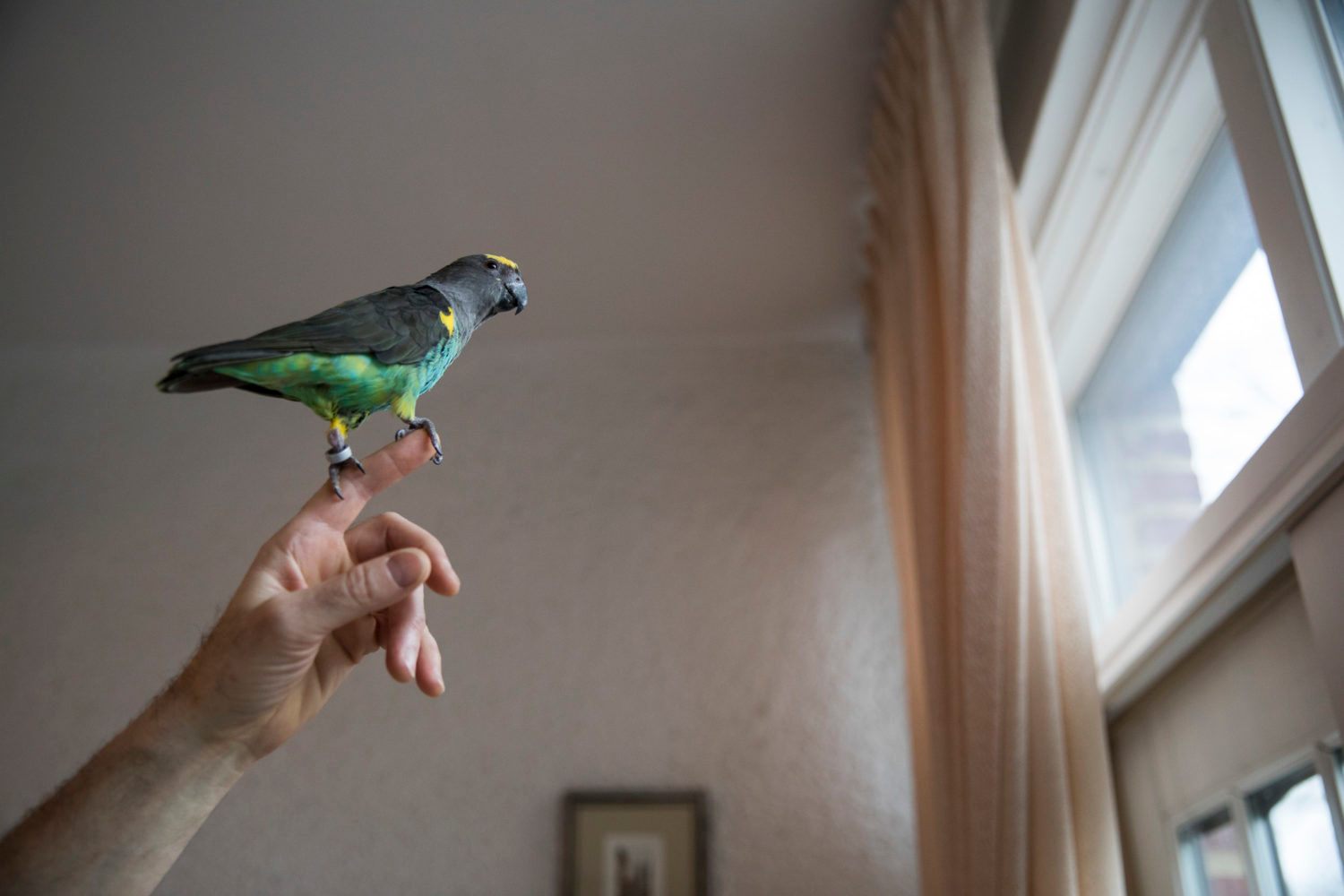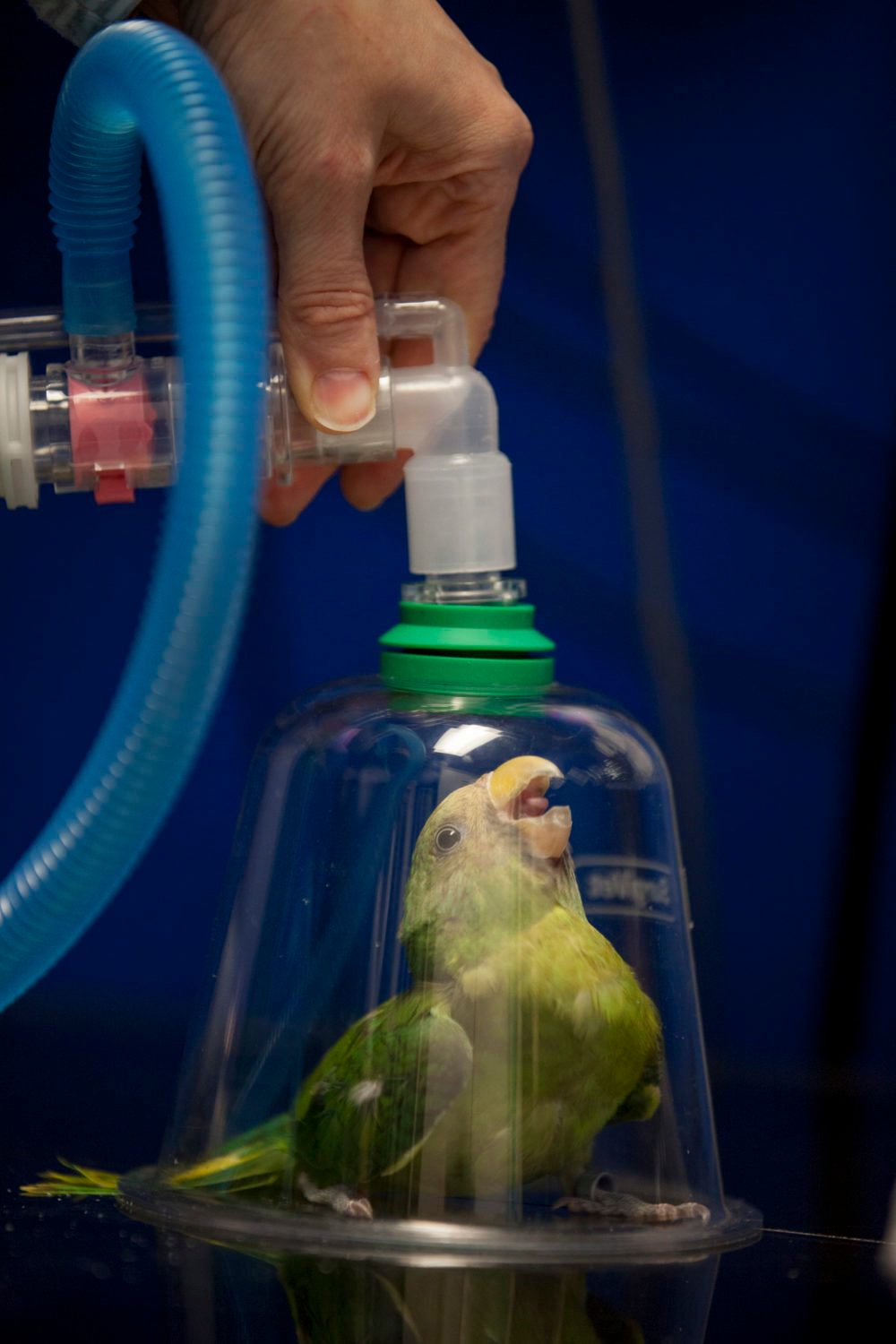What It’s Like to Care for Parrots in Washington, D.C.
Caring for these birds is a big responsibility.

I can hear the piercing squawks from the parking lot. It’s as if I’ve entered the African jungle or the Amazon rainforest. But I’m much closer to home at Garuda Aviary, a lifetime sanctuary for neglected and abused parrots in Poolesville, Maryland.
As I approach, a chorus of “hellos” and “hi’s” provide a polite greeting. In front of me is an enclosure with about four dozen flapping, cawing parrots as vibrant as a box of crayons. They range in size from a couple of inches to a few feet. The cacophony builds until a soothing human voice creeps in to calm the brightly colored birds. It belongs to Christopher Zeoli, who’s run the sanctuary for 12 years. He likes to call himself “the parrot whisperer.”
He takes me on a tour of the sanctuary and introduces me to a few of the feathery residents. Each one has a distinct personality.
“This is Coco Two,” Zeoli points out a white umbrella cockatoo who stands on a perch giving us a weary eye. “He was pulled out of a dumpster. Coco Two dances when he’s not sure what to do… which I think is the best solution for so many problems.”
On cue, the parrot does a little two-step.
A Sanctuary for Birds in Need
Zeoli says he gets up to three requests per week from people wanting to abandon their parrots. But space is limited, so he prioritizes the most desperate cases. Garuda is a lifetime sanctuary, meaning the birds are never adopted out. They stay here for the rest of their lives, which can be a very long time. “Sixty years is a good average age for most parrot breeds,” Zeoli says. “One of the reasons they are abandoned so frequently is that they often outlive their owners.”

That’s not the only reason people end up ditching their parrots. They are intelligent and social creatures who bond easily with humans, but they need a lot. That includes places to exercise, toys to play with, sunlight, and the ability to socialize with other parrots. “Without these enrichments, a bird’s life is boring, and it will just become depressed and anxious,” Zeoli says.
And, of course, they can be loud. Very loud.
It comes as no surprise that caring for the sanctuary’s 52 parrots is more than a full-time job for Zeoli, even with about 14 volunteers. His goal is to help the parrots act naturally and feel protected. That’s why the sanctuary is called Garuda.
“In Tibetan Buddhism, the Garuda is a fierce protector bird,” he says. I ask him if that’s what he is—the parrots’ Garuda. “Not so fierce,” Zeoli laughs, “but protective.”

Parenting a Parrot
In the United States, there are more than 20 million pet birds. That includes Murray, a Meyer’s parrot who lives with Sheila Riley and Ned Kraft in an apartment in Washington, D.C. Murray is 13 years old, and stands eight inches tall. He’s green, gray, and yellow with a touch of turquoise under his wings.
On a cool afternoon, Murray hops out of his cage and flutters around the apartment before sticking a landing on Kraft’s shoulder. The bird joined the family about 10 years ago.
“How other people talk about their kids or their grandkids, we talk about Murray—just as long with as many stories,” Kraft says. “So, yeah, we are the crazy bird people.”
The couple takes Murray on regular walks in a specially designed backpack. Riley sings to Murray every morning, and Kraft knows his favorite spot for a head scratch. The parrot seems to have bonded to the couple. While we talk, Murray sits on Kraft’s shoulder chirping away and showing affection. He’s known to hand out kisses.
“It’s just a bump of the beak on the lips,” Kraft says.
“His first words were ‘kiss, kiss,’” Riley adds.
Despite the love, they admit it took time to learn how to care for and live with a parrot. “I don’t know if I would get a bird again,” Riley says, “mainly because they live so long and how old am I going to be? I’d want to see a bird through to their life span.”

Meyer’s parrots typically live about 25 years, a shorter life span than most breeds. So, it’s likely that Kraft and Riley, who are both in their 60s, will outlive Murray. However, the thought of finding Murray a new home in case of an emergency worries them.
“We don’t have too many people lined up [to take him],” Riley says. “We have one girlfriend who adores him, but she’s older than us, so that’s not going to work out.”
For the moment they are content and so, it appears, is Murray. Throughout our conversation, he chirps away on Kraft’s shoulder, lightly pecking at his glasses.
“I like it best when he does his nuzzling,” Kraft says, miming the action. “He’ll sit on my chest and put his head up underneath my chin. I’ll cup him with my hands and he’ll just stay there and I know he’s happy.”
The Hard Questions
Lisa Carr, an exotic pet veterinarian in Rockville, Maryland, has cared for Garuda’s parrots for about a decade. “[I] get the distinct honor of getting all the sick ones that no one else can figure out what’s going on with,” she says.
Carr says parrots can fast become part of the family due to their intellect and social skills, but that doesn’t mean they make great house pets. “We have a hard time providing them what they need,” Carr says. “They are designed to fly and… be in really large territories and environments. The house is not really conducive to that.”

Being stuck in a cage all day, Carr says, can lead to behavioral issues and physical disorders, particularly in larger birds. She says she wishes people would do more research to fully understand the responsibility that comes with having a pet parrot. She suggested taking classes through rescue organizations or even watching nature shows.
“It’s about reading a bird… seeing how they move and interact,” she says. “[Those things] help you understand what your bird is telling you.”
Even doing that, Carr still questions the cost of keeping one in the family. “We really like having pretty things and birds are amazing creatures and fascinating,” Carr says. “But is it the best thing for us as a family? Is it the best thing for the bird?”
The hard answer might be no.
Zeoli has come to a similar conclusion. He loves his parrots, but he’s honest about his—or anyone else’s—ability to properly care for them. “Even in the most ideal conditions,” Zeoli says, “you cannot provide for a parrot the kind of life that they’ve naturally evolved for.”
Not even in a lifelong sanctuary in the woods of Poolesville, Maryland.
This story is part of Hidden City, a collaborative partnership of WAMU and Atlas Obscura. You can listen to the accompanying audio story on WAMU’s site.
















Follow us on Twitter to get the latest on the world's hidden wonders.
Like us on Facebook to get the latest on the world's hidden wonders.
Follow us on Twitter Like us on Facebook